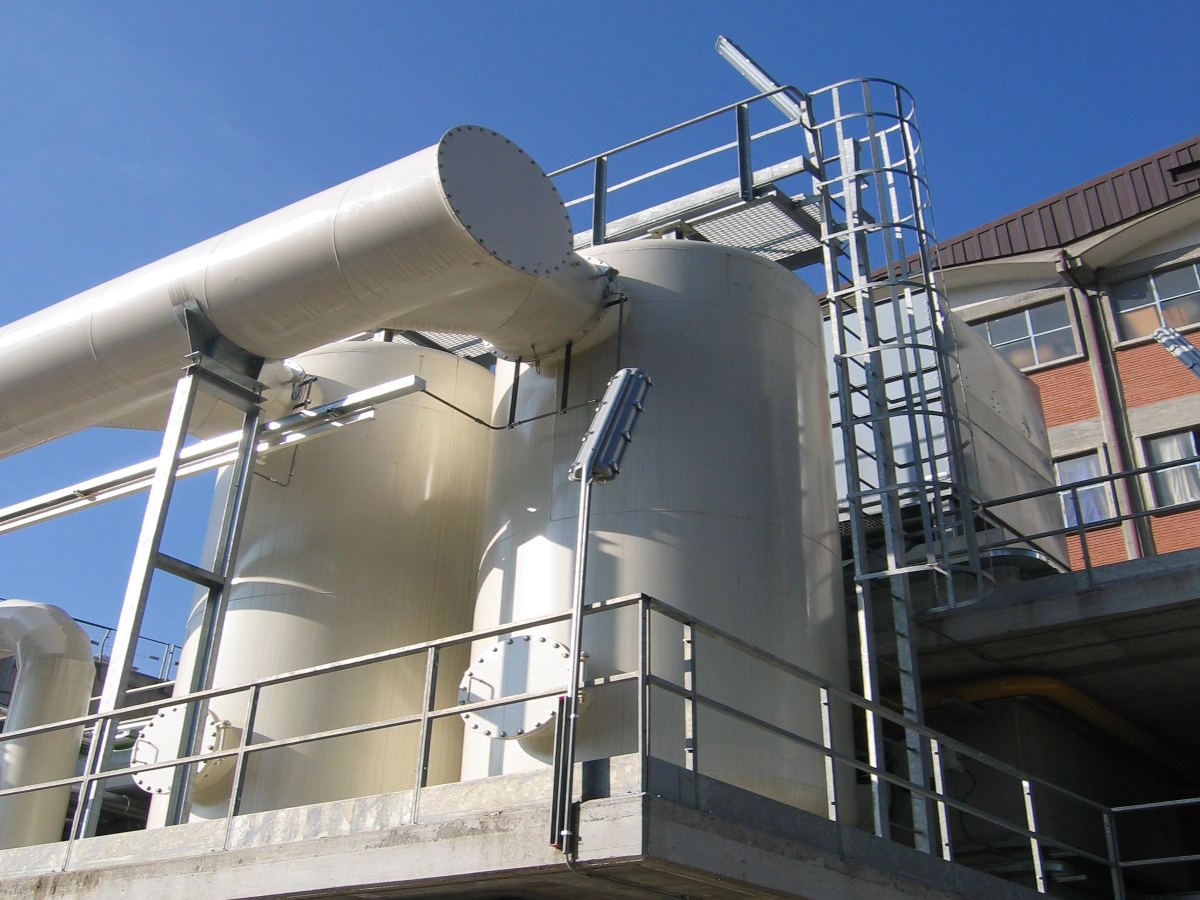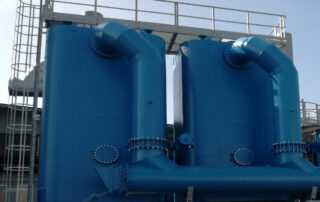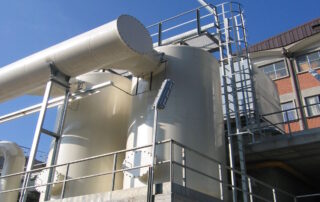Activated carbon filters are mainly used to treat small air flow rates and low concentrations of pollutants, to reduce odours and particular substances difficult to process such as silicates. When the activated carbons are saturated, they must be regenerated or disposed of.
Features and avantages of activated carbon air filter
- Electrical switchgear with PLC and remote assistance
- Measurement and testing system of the residual adsorption capacity to ensure correct operation of the plant
- Structure fully airtight and built also using appropriate steels (AISI 304, 316…).
- Easy to manage and use
- Reduced maintenance
Activated carbon filtration process – Operating principle
The effluent is drawn and conveyed inside a tank fitted with a baffle, whether horizontal or vertical, where the activated carbon is set, obliging the effluent to pass through it therefore avoiding preferential passages which would alter the abatement of the pollutant and jeopardise its efficiency. The activated carbon has a porous structure, a large specific area and high adsorbent capacity. This allows it also to be used as a filter to treat gaseous emissions as the pollutants are captured in the pores of the carbon thus purifying the effluent. Looking at them through a microscope, the activated carbons are composed of a series of burrows which become progressively smaller so as to “trap” the pollutants in the air. This structure allows them to have a very high specific surface, even up to 2500 m2/g, technically divided into macropores (>500 Angstrom), mesopores (20-500 Angstrom) and micropores (0-20 Angstrom). When the pollutants penetrate deep down, they are not able to escape except in particular conditions, for example through the steam or inert gas regeneration process, thus purifying the effluent. This characteristic implies that, depending on the type of pollution control plant, these systems can be regenerated within the same plant by using steam or inert gas (solid recovery plants) or not regenerated on site and therefore when the saturation limit is reached, the carbon load must be replaced with a new one.
Plant engineering solutions
- Turnkey supply
- Flexibility in choosing the testing system of the residual adsorption capacity
- Customised design in case of space restrictions.
- Also applicable with non-organic pollutants, odours, ammonia or hydrogen sulphide.
- Inertisation and firefighting measures for application with particularly hazardous pollutants such as MEK
Services provided
Choosing Brofind means:
- Customer assistance 24/7
- Impartiality in recommending pollution control technologies since Brofind is owner of many of them
- Experience in the design and manufacturing of abatement plants since 1993
See the page dedicated to Brofind services to understand how we support our customers during the entire lifecycle of the product.



